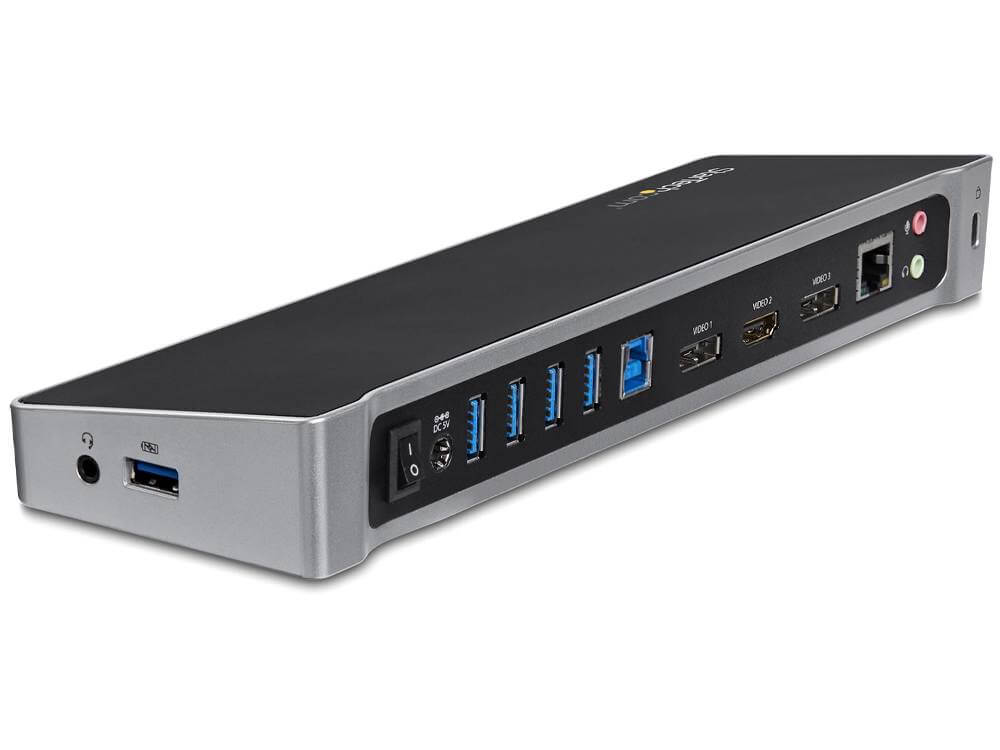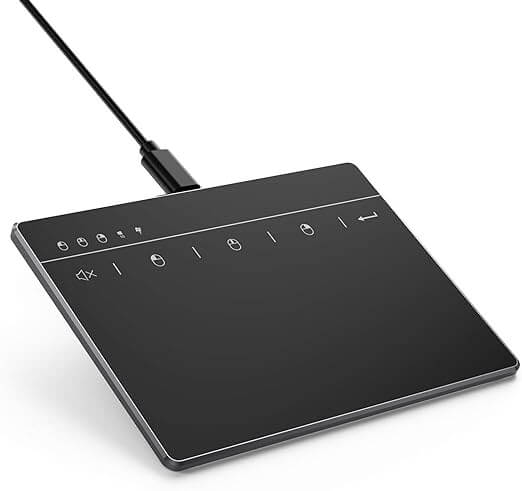Mobile Device Accessories
Contents
Mobile Device Accessories#
Mobile devices have become an integral part of our daily lives, serving as powerful tools for communication, productivity, entertainment, and more. To enhance the functionality and versatility of these devices, a wide range of accessories are available in the market. In this article, we will delve into three popular mobile device accessories: Docking Stations, Port Replicators, and Trackpad/Drawing Pads. We will explore their features, use cases, and how they contribute to the overall mobile computing experience.
Docking Stations#
Docking stations are accessory devices designed to provide a seamless transition between a mobile device and a more stationary setup, such as a desktop workstation. These accessories offer a plethora of connectivity options and features that enhance the capabilities of mobile devices, making them suitable for more demanding tasks and extended use.
Features and Connectivity Options#
Docking stations typically offer a variety of ports and connections, effectively turning a mobile device into a versatile workstation. Common features include:
Multiple Ports: Docking stations come equipped with various ports, such as USB, HDMI, DisplayPort, Ethernet, audio jacks, and more. This allows users to connect peripherals like external monitors, keyboards, mice, printers, and external storage devices.
Charging: Many docking stations provide charging capabilities for mobile devices. This ensures that your device remains charged while connected to the station, eliminating the need for separate chargers.
External Displays: Docking stations often support multiple external monitors, enabling users to expand their workspace. This is particularly beneficial for tasks that require multitasking and a larger screen real estate.
Use Cases#
Docking stations are especially useful for professionals who require a seamless transition between mobile and stationary work environments. Some common use cases include:
Multimedia Editing: Video editors, graphic designers, and content creators can benefit from the increased screen space and connectivity options offered by docking stations. They can connect high-resolution monitors, external hard drives, and other peripherals to enhance their productivity.
Business Presentations: Docking stations facilitate professional presentations by allowing users to connect their mobile device to projectors or larger displays. This ensures a smooth and reliable display of content during meetings and conferences.
Gaming and Entertainment: Gamers can connect external gaming peripherals, such as keyboards, mice, and controllers, to their mobile devices through docking stations. This provides a more immersive gaming experience.
Port Replicators#
Port replicators, sometimes referred to as “port extenders,” are accessories that focus on simplifying connectivity by providing additional ports and connections for mobile devices. While they offer similar functionality to docking stations, port replicators are often more compact and portable.
Features and Connectivity Options#
Port replicators are designed to be compact yet effective in expanding a device’s connectivity options. They offer features such as:
Additional Ports: Port replicators typically include multiple USB ports (Type-A and/or Type-C), HDMI or DisplayPort outputs, Ethernet ports, and audio jacks. These ports enable users to connect peripherals and external displays without cluttering their mobile device.
Plug-and-Play: Port replicators are known for their ease of use. They usually require a single connection to the mobile device, after which all the connected peripherals become instantly accessible without the need for complex setups.
Use Cases#
Port replicators are versatile accessories suitable for a variety of scenarios, including:
On-the-Go Productivity: Business travelers or remote workers can carry a port replicator in their bag to instantly set up a productive workspace wherever they go. This allows them to connect to external monitors, keyboards, and other accessories without hassle.
Home Office Setup: Users who primarily work from home can benefit from the simplicity and convenience of a port replicator. They can quickly connect their laptop or tablet to a larger monitor, keyboard, and mouse, enhancing their work efficiency.
Collaborative Work: In collaborative environments, such as classrooms or small group meetings, port replicators can be used to share content on a larger screen. This enables seamless interaction and collaboration among participants.
Trackpad/Drawing Pads#
Trackpad/drawing pads are accessories designed to enhance input capabilities, particularly for tasks that require precise control or creative expression. These accessories offer an alternative to the built-in touchscreens of mobile devices, providing a more accurate and versatile input method.
Features and Functionality#
Trackpad/drawing pads come with various features tailored to different use cases. Some of these features include:
Pressure Sensitivity: Many drawing pads come with pressure-sensitive surfaces, allowing users to control line thickness and shading based on the pressure applied while drawing. This is particularly useful for digital artists and illustrators.
Multi-Touch Gestures: Trackpads often support multi-touch gestures, similar to those found on laptops. This enables users to perform actions such as zooming, scrolling, and rotating with ease.
Customizable Controls: Certain trackpads and drawing pads allow users to customize the functionality of different areas or buttons. This can enhance productivity by assigning specific shortcuts or commands to these customizable zones.
Use Cases#
Trackpad/drawing pads cater to a diverse set of users who require precise input methods or creative tools:
Digital Artistry: Professional artists and illustrators can utilize drawing pads to create intricate digital artworks with high precision. The pressure sensitivity and fine-tuned control enable them to replicate traditional art techniques digitally.
Photo Editing: Photo editors can benefit from the accuracy of trackpads when making intricate adjustments and retouching images. The precision offered by these accessories can enhance the quality of photo editing tasks.
Design and Architecture: Designers, architects, and engineers can use trackpads to manipulate complex design software more effectively. The precise input provided by these accessories aids in creating accurate and detailed designs.
Other Mobile Device Accessories#
Protective Accessories#
Protective accessories are designed to shield mobile devices from physical damage, such as drops, scratches, and impacts. They play a crucial role in extending the lifespan of devices and maintaining their resale value. Some common protective accessories include:
Phone Cases and Covers: These are available in a variety of materials, such as silicone, rubber, plastic, and even metal. They wrap around the device, providing a layer of cushioning and protection against accidental drops and impacts.
Screen Protectors: These transparent films are applied directly to the device’s screen to prevent scratches, smudges, and cracks. They are particularly important for touchscreen devices to maintain touch sensitivity.
Bumper Cases: These cases cover the sides of the device, leaving the front and back exposed. They provide protection against edge impacts while showcasing the device’s design.
Productivity Accessories#
Productivity accessories are designed to enhance the efficiency and utility of mobile devices, transforming them into powerful tools for work and organization. Examples include:
Keyboard Attachments: These accessories can turn smartphones or tablets into miniature laptops by providing physical keyboards, making typing more comfortable and efficient.
Stylus Pens: Stylus pens are ideal for devices with touchscreens, enabling precise input for tasks such as note-taking, drawing, and design work.
Wireless Charging Pads: These pads allow for convenient and cable-free charging, encouraging users to keep their devices charged without the hassle of plugging and unplugging cables.
Audio Accessories#
Audio accessories are aimed at enhancing the auditory experience of mobile devices, whether for calls, music, or multimedia consumption. Notable examples include:
Headphones and Earphones: These come in various types, including over-ear headphones, on-ear headphones, and in-ear earphones. They offer high-quality audio output and noise isolation for immersive sound experiences.
Bluetooth Speakers: Wireless speakers connect to mobile devices via Bluetooth, allowing users to enjoy amplified sound without the constraints of cords.
True Wireless Earbuds: These compact earbuds provide a wire-free listening experience and often come with features like touch controls and noise cancellation.
Aesthetic Accessories#
Aesthetic accessories cater to users who want to personalize and style their devices to reflect their individual tastes. Examples include:
Phone Skins: Skins are thin adhesive covers that adhere to the device’s exterior, offering a wide range of designs and patterns to customize its appearance.
Pop Sockets and Ring Holders: These attachable accessories add grip to the device and can also be used as stands for hands-free viewing.
Customizable Phone Cases: Some manufacturers allow users to create their own custom phone cases with personalized images, designs, and text.
Final Insights#
Mobile device accessories, including docking stations, port replicators, trackpad/drawing pads, and various others, play a role in extending the capabilities of contemporary mobile devices. Whether you’re a professional aiming to boost efficiency, an artist pursuing precise control, or an individual seeking seamless transitions across different settings, these accessories present solutions that address a diverse array of requirements. Through enhanced connectivity, refined input mechanisms, and increased adaptability, these accessories contribute significantly to a more adaptable and effective experience in mobile computing. With ongoing technological advancements, we can anticipate the emergence of even more innovative accessories that will further enhance our interaction with our devices.



